Global enterprises are under mounting pressure to modernize how they connect distributed offices. Traditional telephony models simply don’t scale: the average PRI line costs $400–600 per month per location, according to TeleGeography. For a company running 50 branches, that translates into hundreds of thousands annually, before factoring in long-distance charges and separate maintenance contracts.
SIP trunking changes that equation by consolidating voice traffic into a single IP backbone. Instead of paying for isolated lines in every branch, organizations can share capacity across sites, route calls dynamically, and cut inter-office charges to near zero. A Gartner survey found that 74% of enterprises with multi-site operations plan to transition to SIP trunks by 2026, citing scalability and centralized management as the top drivers.
The real challenge isn’t deciding whether to move, it’s how to structure SIP trunking to fit the realities of a multi-location business. That’s where this guide comes in. You’ll see how distributed enterprises—from retail chains to healthcare networks, can replace outdated PRI lines with a model that reduces telecom spend, improves collaboration, and supports expansion into new regions.
The next section looks closely at the multi-location challenge and why legacy systems are breaking budgets for organizations with geographically dispersed offices.
Key Takeaways
- Traditional PRI systems cost $400–$600 per site monthly and don’t scale, SIP trunking consolidates voice traffic, reducing spend by up to 57% across branches.
- SIP trunks enable centralized management, shared call capacity, and global routing, cutting telecom admin time by 40% and long-distance fees to near zero.
- DiDlogic’s geo-redundant SIP infrastructure supports scalable multi-site deployment, including Microsoft Teams, Zoom Phone, and Cisco integrations.
- Advanced routing features, like least-cost and time-of-day routing, optimize outbound call paths and support “follow-the-sun” customer service models.
- Enterprises gain compliance-ready architecture (HIPAA, GDPR, PCI), failover resilience, and the agility to activate new global branches in hours, not weeks.
The Multi-Location Challenge (What Companies Are Up Against)
Managing phone systems across multiple sites creates cost and complexity that traditional PRI lines can’t resolve. Each branch typically maintains its own contracts, hardware, and support agreements. For enterprises with dozens—or hundreds, of sites, the result is fragmented communications and bloated telecom bills.
Take a retail chain with 100 stores. If each site pays $500 per month for a PRI line (TeleGeography), the company spends $600,000 annually before long-distance or inter-store calls are even considered. None of those lines can share capacity, meaning unused channels in one store can’t be leveraged by another during peak hours.
A law firm with regional offices faces a different pain point. Clients expect to reach lawyers through familiar local numbers, yet maintaining and porting those across state lines creates administrative headaches. Regulatory rules on numbering add more complexity, leading to frustrated clients and wasted staff hours on telecom administration.
For a healthcare network, compliance drives the challenge. Routing patient calls between hospitals or clinics requires HIPAA-compliant pathways. Legacy setups often rely on VPN-tunneled PRI interconnects, which are expensive and hard to scale when opening new clinics. One U.S. hospital group reported spending $1.2 million annually just to maintain redundant PRI circuits across its regional facilities (Frost & Sullivan).
Each scenario highlights the same problem: traditional voice infrastructure wasn’t designed for distributed enterprises. SIP trunking solves that by providing a shared, centralized backbone.
Core Benefits of SIP Trunking for Multi-Site Organizations
Centralized Communication Management
SIP trunking unifies voice traffic through a single backbone. Instead of IT teams managing dozens of contracts and invoices, billing consolidates into one account. Administration becomes easier too: adding or removing channels is done through a central portal rather than calling local carriers. Case studies from Nemertes Research show companies cutting IT staff time on telecom administration by up to 40% after centralizing with SIP trunks.
Cost Efficiency Beyond Line Rental
Savings go far beyond replacing line rental. SIP trunks let enterprises pool channels across sites, so unused capacity in one branch offsets demand in another. Long-distance and international calls often ride over IP at a fraction of carrier rates.
Here’s a cost comparison for a mid-sized enterprise with 5 branches across 3 countries:
| Setup | Annual Cost Estimate | Notes |
| PRI (5 lines @ $500/month) | $30,000 | Local-only, no pooling |
| SIP (50 channels pooled) | $18,000 | Shared capacity, global routing |
| Additional long-distance fees | +$12,000 | For PRI only |
| Total Annual Spend | $42,000 (PRI) vs $18,000 (SIP) | ~57% savings |
Pooling and global routing create direct financial impact, particularly for companies with international operations.
Scalability Across Locations
SIP trunks scale without new physical circuits. Burstable channels allow companies to handle seasonal spikes—holiday retail or tax-season law practices—without renegotiating contracts. A new branch can go live in hours instead of weeks, since provisioning is virtual. That agility is particularly valuable during mergers and acquisitions, where integrating communications often stalls post-deal productivity.
Enhanced Collaboration and Productivity
By moving to SIP, companies unlock enterprise-grade collaboration platforms. Microsoft Teams, Zoom Phone, and Cisco Webex integrate directly, so employees across continents can use four-digit extensions as if they sat in the same office. Internal calls become free, while staff gain access to features like presence, video, and unified messaging. For global companies, SIP turns distributed teams into one virtual office.
Technical Requirements & Architecture
Bandwidth & QoS Planning
Voice quality depends on proper bandwidth planning. A single G.711 call requires about 87 kbps including IP overhead. Multiply by the number of concurrent calls to estimate needs. For instance, 100 simultaneous calls require roughly 8.7 Mbps of dedicated bandwidth.
| Concurrent Calls | Codec | Bandwidth per Call | Total Bandwidth Needed |
| 20 | G.711 | ~87 kbps | ~1.7 Mbps |
| 50 | G.711 | ~87 kbps | ~4.4 Mbps |
| 100 | G.711 | ~87 kbps | ~8.7 Mbps |
| 200 | G.711 | ~87 kbps | ~17.4 Mbps |
Quality of Service (QoS) must prioritize voice packets over data traffic. Without QoS, spikes in file transfers or video streaming can degrade calls with jitter or packet loss. Enterprises should enforce DSCP tagging and segment VoIP traffic through VLANs to keep quality consistent.
PBX & Cloud UC Compatibility
Enterprises rarely migrate overnight. Many run a hybrid setup, linking legacy PBXs through SIP gateways while moving some users directly into Microsoft Teams, Zoom Phone, or Cisco Webex. This ensures continuity while gradually retiring on-premises gear.
Key vendor compatibility checklist:
- PBX vendors: Avaya, Mitel, NEC, Cisco Unified CM (via SIP trunk integration).
- UCaaS platforms: Microsoft Teams (Direct Routing), Zoom Phone (BYOC), Cisco Webex (SIP trunk federation).
- Gateways/SBCs: AudioCodes, Ribbon, Cisco CUBE, Sangoma.
Choosing a SIP provider with certified interoperability across these vendors avoids costly surprises during rollout.
Security & Compliance
Voice fraud losses exceeded $39.89 billion globally in 2021, according to the Communications Fraud Control Association (CFCA). SIP trunks must be secured with TLS (for signaling) and SRTP (for media) to prevent interception. Enterprise-grade SBCs also help detect unusual call patterns that signal fraud attempts.
Compliance adds another layer. Healthcare organizations must ensure HIPAA-compliant encryption and access controls. Multinationals operating in Europe must align with GDPR, which requires safeguarding call metadata as well as voice content. Providers offering compliance-ready infrastructure reduce legal risk while protecting sensitive data.
Deployment Models for Multi-Location Environments
Centralized vs Decentralized SIP Trunking
Enterprises typically choose between two models: a single, centralized SIP trunk routed through a private backbone, or decentralized trunks provisioned locally at each site.
| Model | How It Works | Advantages | Drawbacks |
| Centralized | One trunk at HQ, calls routed via MPLS/VPN to branches | Simplified billing, efficient pooling, consistent policies | If HQ link fails, all sites impacted; higher MPLS costs |
| Decentralized | Local trunks at each site | Local redundancy, reduced latency, survivability if one site fails | Higher admin overhead, multiple contracts, less efficient pooling |
Enterprises often adopt a hybrid model, centralizing most traffic while keeping local trunks for critical branches needing survivability.
Redundancy & Failover
Business continuity depends on layered failover. Providers with geo-redundant Points of Presence (PoPs) allow calls to reroute automatically if a site’s connection drops. Backup trunks and DNS SRV records ensure call requests can re-register with the next available server in seconds. For example, if a branch in London loses fiber, calls can automatically re-route through Frankfurt while staff remain reachable.
Local Presence & Number Portability
Customers trust businesses that present familiar local numbers. SIP trunks support Direct Inward Dialing (DIDs) so every site can maintain regional presence even without a physical office. Virtual numbers extend this further, allowing a U.S. firm to provide Paris or Tokyo numbers that ring back to a central call center. Porting existing numbers into SIP trunks preserves continuity, while expanding into new regions requires only virtual DID provisioning rather than building physical offices.
Advanced Call Routing for Distributed Teams
Least-Cost Routing (LCR)
SIP trunks allow enterprises to algorithmically choose the most economical path for outbound calls. The system evaluates carrier rates across regions and automatically routes calls through the cheapest available node.
For example, a U.S. employee dialing a London client might see the call routed through an EU PoP before reaching the UK, reducing per-minute international charges.
Sample Call Flow Diagram:
US Branch → SIP Core (EU Node) → UK PSTN Gateway → London Client
This routing is invisible to the caller yet delivers measurable savings, particularly for organizations with high outbound international traffic. Large enterprises can reduce global telephony spend by 20–30% using LCR, according to IDC.
Geographic & Time-of-Day Routing
Global SIP trunks also enable “follow-the-sun” support models. Calls route automatically to the office that’s open, based on geography and local business hours.
A practical example: a BPO provider with centers in Manila, Warsaw, and Chicago uses geographic/time-of-day routing. Morning calls from Australian customers reach Manila, European customers are handled in Warsaw during their business hours, and late-night U.S. calls are answered in Chicago. Customers get live support at all times without relying on costly 24/7 local staff.
This approach not only reduces payroll overhead but also improves customer satisfaction by ensuring fast, localized responses.
Choosing the Right SIP Provider for Multi-Location Business
Enterprises evaluating SIP providers often fixate on per-channel rates. Price matters, but for multi-location deployments, it’s rarely the most decisive factor. A provider’s ability to deliver consistent quality and compliance across markets determines long-term success.
Key criteria to consider:
- Global Network PoPs and Coverage: Providers with geographically diverse PoPs minimize latency and improve resilience.
- SLAs (Service Level Agreements): A 99.999% uptime SLA guarantees ~5 minutes of downtime annually, compared to ~9 hours with 99.9%.
- Experience with Multi-Site Rollouts: Providers familiar with large-scale migrations reduce risks during cutovers.
- Support Responsiveness: Around-the-clock NOC support is critical when outages can halt business operations.
- Regulatory Compliance: Providers must handle country-specific rules (e.g., emergency services in the U.S., data retention laws in the EU).
Quick CIO Checklist for Vendor Shopping:
- Does the provider operate PoPs in every region we serve?
- What SLA tier (99.9% vs 99.999%) do they guarantee in writing?
- Can they demonstrate prior multi-site rollouts of our scale?
- How fast is their average support response time?
- Do they offer compliance certifications relevant to our industry (HIPAA, GDPR, PCI DSS)?
Selecting the right provider is about ensuring resilience, not just cutting telecom bills. The wrong choice can create hidden costs in downtime, compliance gaps, and customer dissatisfaction.
Conclusion
SIP trunking delivers far more than reduced telecom bills. For multi-location businesses, it provides the agility to expand into new markets, unify communications, and maintain compliance across borders. Legacy PRI circuits limit growth; SIP trunks create a global backbone that scales with the enterprise.
The most effective way to prove value is through numbers. Auditing current telecom spend against SIP alternatives often reveals double-digit percentage savings, along with efficiency gains in IT operations and collaboration.
Don’t wait for the next office expansion or carrier contract renewal. Test DIDlogic’s multi-site SIP deployment with a pilot trunk today and see how centralized, resilient communications can future-proof your global operations.
FAQs
Can multiple branches share the same SIP trunk?
Yes. SIP trunks can pool capacity across sites, eliminating the need for separate lines in every branch.
What happens if one site loses internet connectivity?
Calls reroute through redundant PoPs or backup trunks, ensuring staff remain reachable.
Is centralized SIP trunking more secure than decentralized?
Centralized models simplify security controls, but decentralized trunks offer site-level redundancy. Many enterprises adopt a hybrid approach.
How does SIP integrate with Microsoft Teams or Zoom Phone?
Through Direct Routing (Teams) or Bring Your Own Carrier (Zoom). Certified SBCs provide the bridge between SIP trunks and UCaaS platforms.
Are there hidden costs (SBCs, licensing, regulatory fees)?
Yes, enterprises should budget for SBC licensing, compliance surcharges, and potential local regulatory fees. Transparent providers disclose these upfront.
How fast can a new branch be added to an existing SIP trunk?
Provisioning is typically completed in hours, far faster than waiting weeks for a new PRI circuit.










